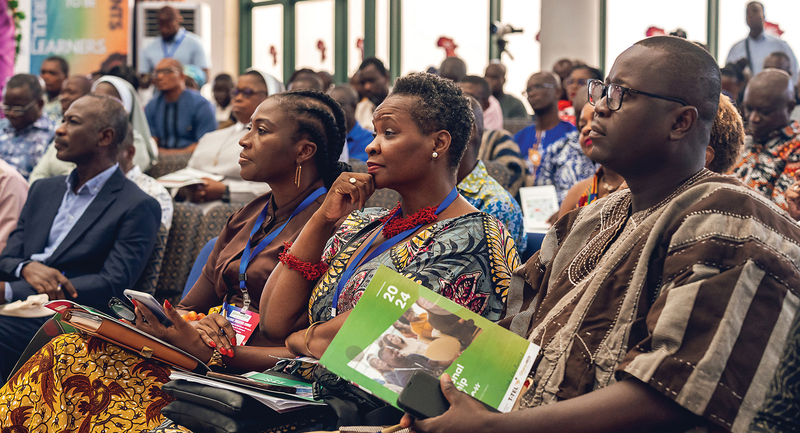Phase 1: Practice Gratitude Personally
As with any action or change, we need to model the behavior before we ask our staff or students to try it. Administrators need to first practice gratitude personally and get comfortable with the idea. Being able to share these personal insights with the entire staff will help when launching this program and will help teachers through any struggles they may encounter.
You can start with a gratitude journal, writing each day: "Thank you for ___ because ___." Apps and websites such as Greater Good Science Center can send gentle reminders and prompts to help you practice this new gratitude exercise daily.
Administrators can also write gratitude letters to teachers and colleagues. Research demonstrates that writing a gratitude letter benefits both the giver and the receiver. These notes should be authentic and thoughtful, telling teachers how much they are appreciated, and may include comments about their dedication, courage, commitment, grit, generosity, and humility as they quietly work wonders in their classrooms.
Phase 2: Integrate Gratitude Activities with Staff
Once a leader is comfortable with his or her own routines of practicing gratitude, it is time to introduce these ideas to the staff. It is essential to communicate clearly the goal of these activities—to improve school culture—and to explain the benefits as shown in research studies.
Leaders can use this initial meeting with the staff to distribute the gratitude letters they wrote to each of their colleagues. They can also encourage teachers to start writing letters to one another, emphasizing that the letter should not be hastily written, but given proper time and intention. It's important that all teachers write and receive letters. And if you find that some teachers push back, or believe that the activities are too "touchy-feely," sharing research that supports the effect of gratitude on schools can help nudge these reluctant colleagues to try it.
Gratitude should be visible and interactive throughout the school. I implemented a Gratitude Board in the teachers' lounge at my school, and teachers and administrators populated the board with evidence of who and what they were grateful for, including other teachers, positive notes and news, and other items. The board added a new positive power to getting a cup of coffee or eating lunch in the lounge.
Phase 3: Spread Gratitude to Students
Once your faculty has practiced their own gratitude activities, they can share them with students. Embedding gratitude projects into existing classroom activities makes the process spread more successfully and saves precious instruction time. In social studies class, for example, students might research a historical figure who had a positive impact on the world and write about why they are grateful for that person. In English class, a teacher may have students compose a gratitude letter to someone they are grateful for, either in the school or in their family, and then, if possible, deliver the letter to the recipient. One student in a class I taught wrote a gratitude letter to another teacher. This teacher later told me that she was really struggling with work and personal problems at the time, and the letter helped her to see how much she was making a difference in her students' lives.
Another colleague created a "gratitude chain." Students wrote something they were grateful for on a strip of paper and linked it to others' gratitude statements to create a long chain that lined the hallway.
And my 4th grade classroom took the gratitude campaign outside our school walls, starting a class project to send blankets, baby formula, and soccer balls to an orphanage in Ethiopia. Months later, we received a thank you letter and photos from the orphanage, which we posted in the classroom. Throughout the rest of the school year, I would inevitably find students standing by the bulletin board, smiling at the photos. One student said, "I never realized … this could make me feel so good about myself."
Students at Temple Heights Elementary School in Oceanside, California, constructed gratitude murals with recycled bottle caps as part of a Stars and Stripes Service Project. (Photo by Rose Kelley)
Phase 4: Keep Applying Gratitude
Cultivating gratitude can bring transformative changes, but this often happens incrementally, so be patient and persistent. Encourage teachers and students to lead the initiative, changing it and making it their own. Let their interests, strengths, and passions guide the process.
Change gratitude routines to avoid "gratitude fatigue." Keep activities fun and novel, letting students and teachers create their own gratitude practices and incorporate gratitude into art, music, science, or technology projects. One creative high school class used henna tattoos to display character traits they were grateful for in one another.
When a school embraces gratitude, it can be a powerful tool to improve and energize school culture. Using these four phases as guidelines can make your school a place where people not only work and learn, but thrive.








